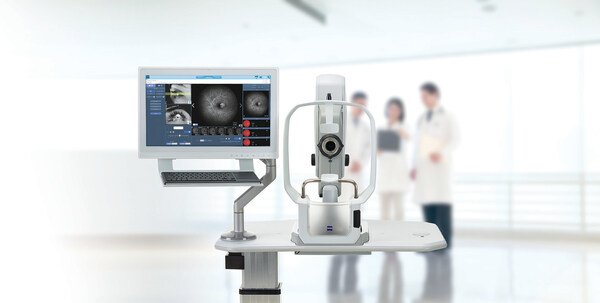ZEISS CLARUS® 700 Receives NMPA Approval in China, Enhancing Retinal Diagnostics
06 June 2025 | Friday | News

ZEISS Medical Technology announced that the CLARUS® 700 from ZEISS has received National Medical Products Administration (NMPA) approval in China, offering advanced retinal diagnostic capabilities with ultra-widefield, high-resolution images in True Color and unsurpassed quality. The fundus imaging device with Fluorescein Angiography helps eye care specialists in China unlock the full potential of their clinic's retina workflow to support improved patient vision preservation.
"ZEISS CLARUS 700 represents a major step forward in retinal imaging," emphasizes Anuj Kalra, Head of Chronic Disease Management at ZEISS Medical Technology. "By seamlessly integrating ultra-widefield Fluorescein Angiography (FA) imaging with true-color reproduction, this system delivers unprecedented clarity for comprehensive visualization from the macular region to the extreme retinal periphery, enhancing efficiency and supporting precise decision-making within the ZEISS Retina Workflow."
"Integrating ultra-widefield imaging, unsurpassed clarity, and AI-enhanced capture, the CLARUS 700 redefines fundus angiography benchmarks. It will provide unparalleled diagnostic precision for Chinese doctors and unprecedented comfort for their patients," says Maxwell Liu, Head of Sales & Services at ZEISS Medical Technology China.
Ultra-widefield fluorescein angiography serves as a highly valuable examination tool for assessing nonperfused retinal areas. The ZEISS CLARUS 700 HD ultra-widefield fundus imaging camera is an advanced retinal imaging system that provides True Color, high-resolution images. It captures 133°1 in a single image and up to 267° with multiple captures, offering detailed views of the retina. Equipped with both fluorescein angiography and live infrared imaging capabilities, the CLARUS 700 aids in diagnosing and monitoring retinal diseases2. Furthermore, the fundus imaging camera offers innovative technology features including PrecisionFocus for quickly seeing details in the regions of interest, QuickCompare to compare pathology changes observed in past patient visits, and AutoBright so ophthalmologists can spend more time analyzing images and less time adjusting them.
Most Read
- How Innovation Gaps in Biopharma Raise New Safety Concerns
- Smart Implants and the Future of Musculoskeletal Injury Treatment
- How Ethical Gaps in Psychiatry Could Undermine Biopharma Progress
- The Evolving Landscape of Women’s Health Innovation in the Asia-Pacific
- Using NLP-Driven Decision Support in Emergency Health Assistance
- Taiwan Steps Into the Global Spotlight With a New Cancer Therapy
- The Role of Unique Device Identification (UDI) in Tracing Medical Device Safety
- The Importance of a Patient’s Mental Health During Clinical Trials
Bio Jobs
- Avantor’s New CEO Ligner Aims to Unlock Global Potential and Deliver Shareholder Value
- AstraZeneca Commits $50 Billion to U.S. Expansion by 2030 in Biggest-Ever Global Investment
- Thermo Fisher, SAMRC, and South Africa’s Department of Science and Innovation Launch CATIR to Nurture Next-Gen Scientists
- Cube Biotech Appoints Former Sartorius CEO Dr. Joachim Kreuzburg to Board of Directors
- FDA’s AI Transition Marks a Turning Point in Drug Review: Industry Faces Pressure to Adapt Amid 20% Workforce Cut
- WuXi XDC Completes Mechanical Build of Singapore Bioconjugate Manufacturing Hub
News
Editor Picks











